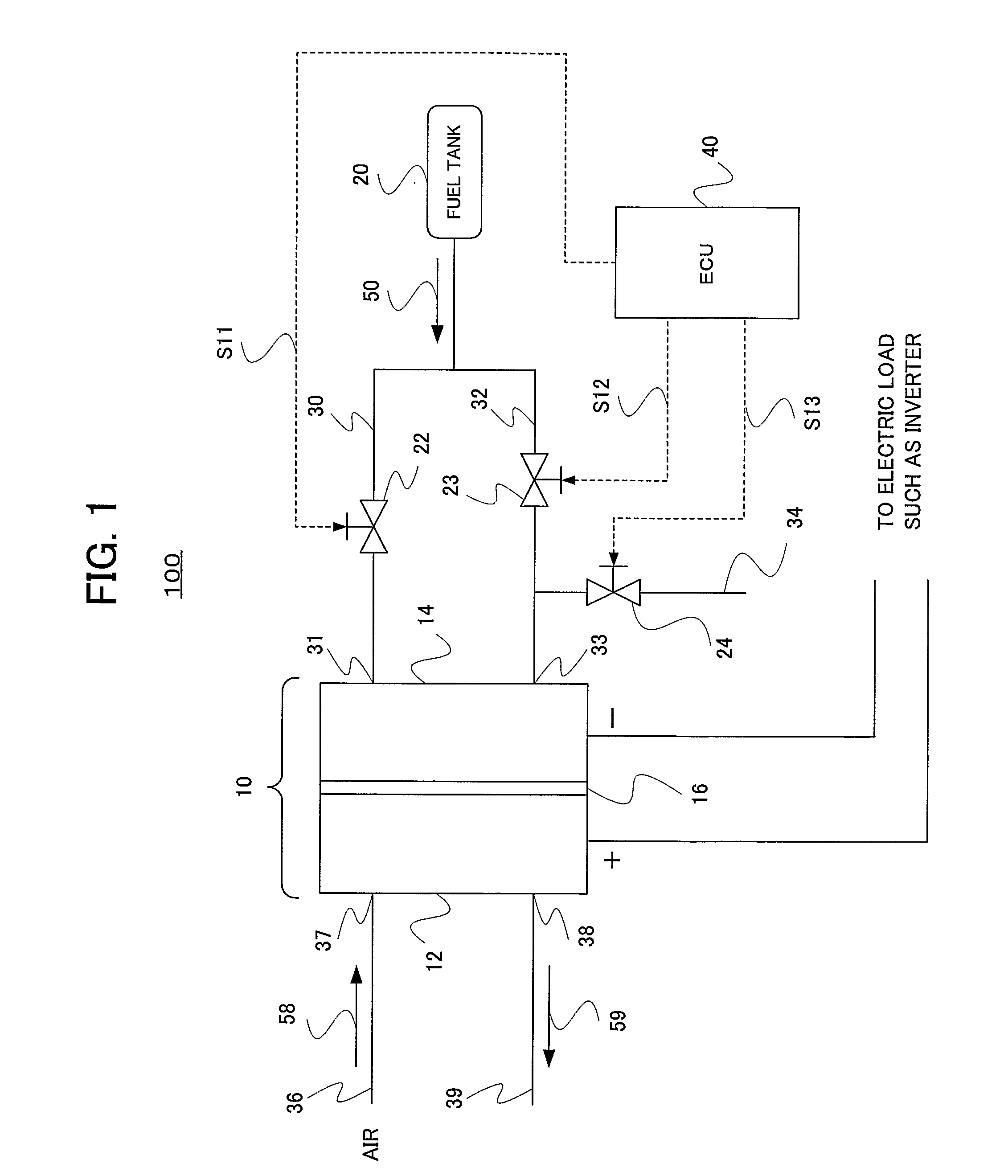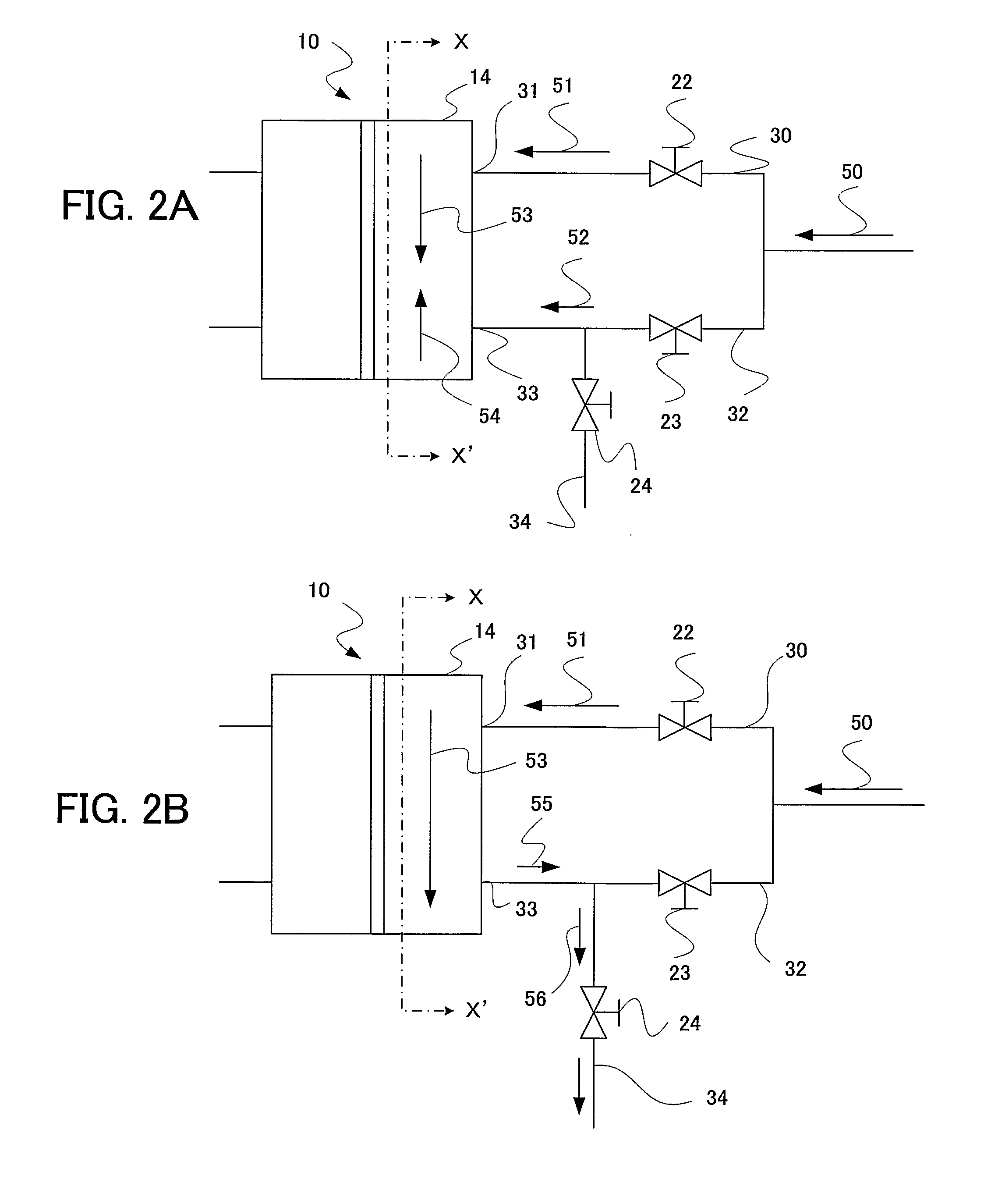Fuel cell system
a fuel cell and system technology, applied in the field of fuel cell systems, can solve the problems of sometimes deteriorating power generation efficiency in the entire fuel cell stack, and achieve the effects of preventing flooding in the anode, reducing the amount of hydrogen purge for discharging impurities, and improving the efficiency of fuel gas us
- Summary
- Abstract
- Description
- Claims
- Application Information
AI Technical Summary
Benefits of technology
Problems solved by technology
Method used
Image
Examples
Embodiment Construction
[0027] The preferred embodiments of the present invention will now be described below with reference to the attached drawings.
[Configuration of Fuel Cell System]
[0028]FIG. 1 is a diagram schematically showing a configuration of a fuel cell system according to an embodiment of the present invention.
[0029] In FIG. 1, a fuel cell system 100 mainly includes a fuel cell stack 10, a fuel tank 20, an ECU (Engine Control Unit) 40, valves 22 to 24, hydrogen supply passages 30 and 32, hydrogen supply openings 31 and 33, a hydrogen exhaust passage 34, an air supply passage 36, an air supply opening 37, an air exhaust opening 38 and an air exhaust passage 39. The fuel cell system 100 is loaded on a fuel cell automobile (hereinafter, simply referred to as “vehicle”).
[0030] The fuel cell stack 10 is manufactured by stacking cells with conductive separators sandwiched between the cells. The cell has an electrolyte membrane 16, and electrodes having a configuration of a porous layer capable of ...
PUM
| Property | Measurement | Unit |
|---|---|---|
| voltage | aaaaa | aaaaa |
| time | aaaaa | aaaaa |
| electric power | aaaaa | aaaaa |
Abstract
Description
Claims
Application Information
 Login to View More
Login to View More - R&D
- Intellectual Property
- Life Sciences
- Materials
- Tech Scout
- Unparalleled Data Quality
- Higher Quality Content
- 60% Fewer Hallucinations
Browse by: Latest US Patents, China's latest patents, Technical Efficacy Thesaurus, Application Domain, Technology Topic, Popular Technical Reports.
© 2025 PatSnap. All rights reserved.Legal|Privacy policy|Modern Slavery Act Transparency Statement|Sitemap|About US| Contact US: help@patsnap.com



